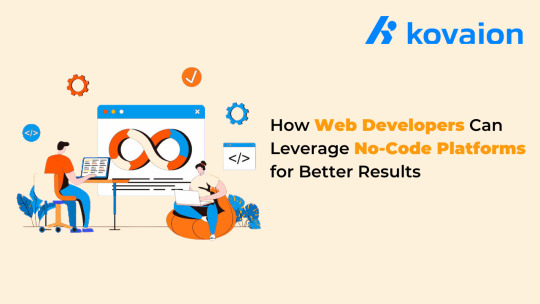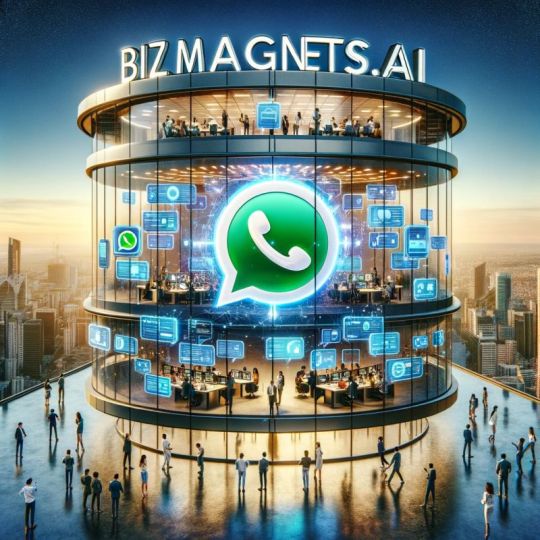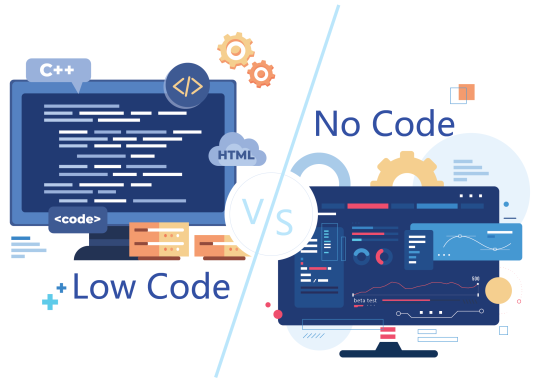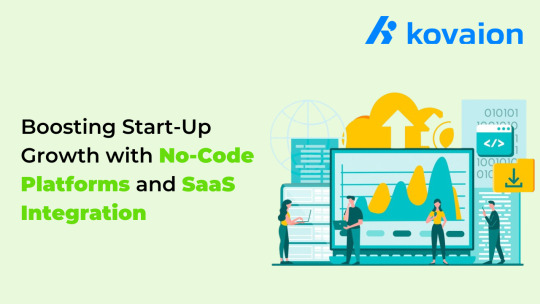#Low Code Platform
Explore tagged Tumblr posts
Text
Common Mistakes to Avoid while Migrating Data from Code to Low-Code Application

Migrating data from traditional code-based systems to low-code applications offers numerous benefits, including increased agility and scalability. However, this transition has its own challenges and can lead to data loss, system downtime, and increased costs if not properly managed. Common pitfalls include inadequate planning, neglecting data quality, insufficient testing, and overlooking data security measures. By understanding and addressing these issues proactively, businesses can ensure a smoother migration process and fully leverage the advantages of low-code platforms.
Challenges with Traditional Data Migration
Data migration to low-code platforms can be complex due to several challenges:
Incompatible Data Formats: Low-code platforms often use proprietary formats that differ syntactically, structurally, or semantically from legacy systems, risking data loss and corruption during migration.
Data Mapping Errors: Matching data from legacy systems to new platforms is tricky. Misjudging the complexity or diversity of data sources can lead to errors, disarray, or incomplete migration, compromising app functionality.
Validation Issues: Limited validation standards in some platforms can result in incomplete or incompatible data entries, affecting the integrity and performance of the application.
Security and Loss Risks: Unplanned migrations can expose data to loss or breaches, potentially disrupting app functionality and overall operations.
Downtime: Poor migration planning often causes extended system outages, leading to productivity losses and operational disruptions.
Critical Mistakes to Avoid During Data Migration from Code to Low-Code
Insufficient Migration Planning
A well-defined roadmap outlining processes, interfaces, and features of the new application is essential. Skipping this step often leads to compatibility issues, unexpected downtime, or data corruption. Development teams should also document the legacy system's key functionalities to ensure error-free transitions and identify areas for improvement.
Neglecting Data Cleanup
Carrying over inconsistent or duplicate data can degrade the quality of the new system. Conducting thorough data profiling and cleansing before migration is critical to eliminate irregularities, ensuring only accurate and valuable data is migrated to the low-code platform.
Overlooking Scalability Requirements
Organizations often focus solely on immediate needs during data migration, neglecting scalability for future growth. This oversight can result in solutions that fail to meet evolving business demands, leading to costly adjustments down the line.
Lack of Training
Once data migration is complete, end users and administrators must be trained on how to utilize the low-code infrastructure. Without proper training, features may become underutilized, inefficiencies can arise, and reliance on IT support increases—defeating the purpose of adopting a low-code approach.
Modernize Legacy Data with iLeap and Smooth Transition to Low-Code
Low-code applications simplify data migration and development processes. Rapid Application Development (RAD) tools break migration projects into manageable data sets, significantly reducing the risk of data loss or corruption when transitioning to low-code platforms. Quick prototyping ensures early feedback, accelerates project timelines, and lowers costs, while its flexibility allows businesses to adapt applications to their evolving needs.
With iLeap, businesses can build responsive mobile and web applications intuitively and 10x faster using a simple visual interface, pre-defined drag-and-drop components, and AI assistance. The platform enables intelligent automation of complex workflows, seamless data integration across systems, and efficient data orchestration. Additionally, iLeap prioritizes data privacy and security with robust governance, compliance monitoring, access controls, and password recovery support. By fostering collaboration and providing an agile, user-friendly environment, iLeap ensures a smooth and efficient legacy modernization journey.
Learn more about how low-code applications can transform your enterprise. - https://ileap.io
#low code#low code application#low code platform#digital transformation#no code low code#digital automation
0 notes
Text
https://www.amoga.io/application-development/
Amoga Application Development
Amoga is a cutting-edge application development platform that empowers businesses to create robust, scalable, and user-friendly applications. It streamlines the development process with customizable features, offering seamless integration, enhanced security, and a rich user experience.
0 notes
Text
The Human Impact of Generative AI
Shaping Tomorrow: How Generative AI Empowers People and Transforms Work

The Metaverse and Generative AI: Creating Immersive Experiences
Generative AI is swiftly transforming the landscape of numerous industries by enabling more efficient workflows and sparking once-impossible innovations. At the heart of this transformation is the capacity of generative AI to automate complex processes and generate new content, from visuals to code, thereby enhancing productivity and creative potential. This article sheds light on how generative AI is revolutionizing various sectors, improving communication through advanced natural language processing, personalizing experiences in healthcare, and even redefining content creation and software development.
The Power of Text-to-Image and Image-to-Image Generation
Generative AI technologies are redefining creativity and design by allowing for the seamless generation of visual content from textual descriptions. This capability accelerates the creative process and democratizes design capabilities, making them accessible to professionals without deep graphic design skills. Industries such as marketing and entertainment are reaping immense benefits from these advancements. For instance, graphic designers can now produce bespoke visuals in minutes, significantly reducing project turnaround times and allowing for greater scalability in creative projects, thereby enhancing business productivity.
This integration across business functions showcases the substantial efficiency gains that can be achieved, enabling companies to tailor their marketing materials quickly and in alignment with consumer preferences without requiring extensive manual effort.
Revolutionizing Software Development with Code Generation and Completion
Integrating generative AI into software development drastically enhances the efficiency and accuracy of coding processes. By automating mundane coding tasks, AI-powered tools free developers to focus on more complex and innovative aspects of software design. These advancements are not just about speeding up development but are transforming how software is created, tested, and deployed.
AI-Powered Coding Assistants
AI coding assistants like GitHub Copilot have been at the forefront of this transformation. According to a GitHub survey, developers using these AI tools report a 55% increase in productivity. These assistants leverage vast code repositories to offer real-time suggestions and complete lines of code, significantly speeding up the development process and reducing bugs.
For example, GitHub Copilot acts like a pair programmer, suggesting entire blocks of code based on natural language comments or a few lines of code. This greatly speeds up the coding process and enhances code quality by suggesting industry-standard practices and reducing errors.
Startups Leading the Charge in AI-Driven Code Generation
Several innovative startups are making waves in this space by focusing on specific niches of the development process
Tabnine - This tool uses machine learning to provide code completions for developers, supporting over a dozen programming languages. Its model learns from the codebase it's working on, offering tailored suggestions that improve over time.
Replit- Aimed at making coding more accessible, Replit provides a collaborative browser-based IDE with AI-powered coding assistance. It's particularly popular among educators and learners, democratizing access to coding tools and environments.
Codota- Like Tabnine, Codota offers intelligent code completions driven by AI. It integrates seamlessly with popular IDEs like IntelliJ and WebStorm, streamlining the development workflow by predicting needs and reducing repetitive coding tasks.
The Future of AI in Software Development
The trajectory of AI in software development points toward more integrated systems where AI tools assist with code and planning, testing, and deployment processes. These tools are expected to become more predictive, using historical data to guide development strategies and optimize team workflows.
By integrating AI into software development, the industry is seeing increased productivity and a shift in the developer's role from coder to innovator. As AI continues to evolve, the future of coding looks set to be more intuitive, creative, and, importantly, more efficient.
AI-Powered Content Creation: A New Era
The advent of generative AI is reshaping the landscape of content creation across multiple platforms. From crafting engaging blog posts to generating dynamic social media content and personalized emails, AI tools play a pivotal role in automating content generation, saving time, and maintaining a high standard of creativity and relevance.
Enhancing Productivity and Creativity
AI content generation tools are a boon for content creators, as they significantly reduce the time spent on content production. According to case studies from Jasper AI, thanks to AI assistance, content creators save an average of 3-4 hours per week. This time savings translates directly into increased productivity, allowing creators to focus more on strategy and less on the mechanics of content creation.
For instance, platforms like Jasper AI offer a range of content creation tools that automate the writing process, from first draft to finished piece, while ensuring the content is engaging and tailored to the audience. Similarly, Writesonic provides tools to enhance marketing content, enabling businesses to produce ads, product descriptions, and marketing copy quickly and efficiently.
The Role of AI in Personalization
Beyond sheer output, AI's real power in content creation lies in its ability to personalize content. By analyzing user behavior and preference data, AI can tailor content to meet the nuanced demands of different audience segments. This level of personalization is particularly effective in marketing, where tailored content can significantly improve engagement rates and conversions.
Navigating Challenges
While the benefits are substantial, using AI in content creation also presents challenges, particularly regarding the originality and authenticity of the content. To address this, many AI platforms are incorporating advanced algorithms that generate content and ensure that it is unique and aligns with the brand's voice. Additionally, a growing emphasis is on blending human creativity with AI efficiency to produce innovative and genuine content.
AI Tools Transforming the Content Landscape
Several other tools and platforms are at the forefront of this AI-driven content revolution
Grammarly leverages AI to correct grammar and enhance the tone and clarity of the text, making it more effective and audience-appropriate.
Articoolo creates unique textual content from scratch, simulating a human writer and significantly shortening the content development cycle
Advancements in Natural Language Processing: Understanding and Communicating Better
Natural language processing (NLP) is the heart of generative AI, enabling machines to understand and interact using human language. This technology has seen significant advancements in recent years, leading to improved communication tools and a deeper understanding of textual data across industries.
Enhanced Communication Tools
One of the most visible impacts of advanced NLP is improving communication tools such as chatbots and virtual assistants. These AI-driven systems can now handle complex conversations, understand nuances, and provide increasingly indistinguishable responses from human interactions. For instance, chatbots powered by sophisticated NLP models are used in customer service to respond instantly to customer inquiries, reducing wait times and improving customer satisfaction.
Sentiment Analysis and Translation
NLP is also pivotal in sentiment analysis, where AI models assess the emotional tone behind text data. This is incredibly useful for businesses to gauge customer sentiment from reviews, social media posts, and other interactions. Machine translation has benefited immensely from NLP, enabling more accurate and context-aware translations that are crucial in global communications.
Real-World Applications of NLP
Customer Service : AI-enhanced chatbots can now provide 24/7 customer service, precisely handling inquiries and redirecting complex issues to human operators.
Market Analysis : NLP tools analyze vast amounts of data from market research to provide insights into consumer behavior, trends, and preferences.
Healthcare : In the medical field, NLP is used to interpret and classify clinical documentation, helping in faster and more accurate patient diagnoses.
Cutting-Edge NLP Technologies
Platforms like OpenAI's GPT -4 are leading the charge in NLP technology. This model has set new standards for language models with its ability to generate coherent and contextually relevant text based on minimal input. This model and others like it are enhancing existing applications and paving the way for new uses that were previously unimaginable.
Challenges and Ethical Considerations
Despite its advancements, NLP faces challenges, particularly in bias and ethical use. Ensuring that AI systems do not perpetuate existing biases in training data is a significant concern that requires ongoing attention and refinement. Moreover, as NLP systems become more integrated into daily activities, privacy and data security questions become more pressing.
Generative AI in Healthcare and Drug Discovery: Accelerating Progress
Accelerating Drug Discovery
One of AI's most impactful applications in healthcare is accelerating the drug discovery process. Traditional drug development is notoriously time-consuming and costly, often taking over a decade and billions of dollars to bring a new drug to market. AI models can predict the effectiveness of compounds much faster than traditional experimental methods, reducing the time and financial investments required. For example, AI systems can simulate the interaction between drugs and biological targets to identify promising candidates for further development, thereby streamlining the early stages of drug discovery.
A McKinsey report highlights that AI has the potential to halve the time required for drug discovery, suggesting a reduction in timelines from 10 years to just five years. This not only speeds up the availability of new medications but also significantly cuts down on R&D costs.
Personalized Medicine
Beyond drug discovery, generative AI enhances personalized medicine, where treatments are tailored to individual patients. By analyzing genetic data, AI systems can predict how patients respond to various therapies, allowing for more personalized and effective care. This approach is particularly transformative in fields like oncology, where understanding the specific genetic makeup of a tumor can guide more targeted and effective treatment strategies.
AI in Medical Imaging
Another critical area where AI is making strides is in medical imaging. AI algorithms can process images faster and often more accurately than human radiologists, identifying subtle patterns that might be overlooked. Tools like Google Health's AI model for breast cancer screening, which has been shown to improve the accuracy of detecting breast cancer in mammograms, exemplify the potential of AI to enhance diagnostic accuracy and improve patient outcomes
Ethical Considerations and Challenges
While the benefits are substantial, integrating AI in healthcare raises significant ethical and privacy concerns. Data security, consent for using personal medical data, and ensuring AI does not perpetuate existing healthcare disparities must be addressed. These challenges require robust regulatory frameworks and ongoing oversight to ensure that the benefits of AI in healthcare are realized without compromising patient trust or safety.
AI-Driven Personalization: Tailoring Experiences for Maximum Impact
Artificial intelligence significantly enhances personalization across various sectors, transforming how services and content are delivered to meet individual preferences and needs. This customization is crucial in e-commerce, education, and media, where tailored experiences can significantly boost user engagement and satisfaction.
Personalized Recommendations
In e-commerce, AI-driven personalization engines analyze user behavior, past purchases, and browsing history to recommend products that users are more likely to purchase. Companies like Amazon and Netflix are renowned for using AI to generate personalized recommendations, which enhances the user experience and increases revenue through improved conversion rates.
Customized Learning Experiences
AI personalization in education revolutionizes learning by adapting content to fit each student's learning pace and style. Platforms like Khan Academy use AI to offer a customized learning path for each user, making education more accessible and effective by addressing individual learning needs and preferences. This approach helps identify areas where students struggle and provide targeted exercises to improve their understanding and retention of the subject matter.
Personalized AI-Powered Content Creation
AI is also making strides in personalized content creation. Tools like Grammarly and Quill Bot tailor writing aids to the user's style and preferences, improving written communication's clarity, tone, and grammaticality. This personalization enhances the writing process and ensures the content effectively conveys the intended message.
Business Benefits
Personalization can lead to significant business benefits, including increased customer loyalty and spending. A study by Deloitte found that companies that leverage consumer behavior insights through personalization see revenue increase by 6% to 10%, which is two to three times higher than those that don't. Personalized marketing campaigns ensure that customers receive messages that resonate with their specific needs and preferences, greatly enhancing the effectiveness of marketing efforts.
Democratizing Development: Low-Code/No-Code Platforms
The rise of low-code and no-code platforms marks a significant shift in how software and applications are developed. These platforms democratize the ability to build complex systems without extensive programming knowledge. This technology enables a broader range of people, including those without formal coding expertise, to create applications, automate workflows, and contribute to digital transformation efforts within their organizations.
Empowering Non-Technical Users
Low-code and no-code platforms such as Microsoft PowerApps, Google AppSheet, and Bubble empower non-technical users to build applications through intuitive graphical user interfaces. These platforms provide drag-and-drop components, pre-built templates, and simple logic formulas, making it easier for non-developers to bring their ideas to life quickly and efficiently.
Reducing Development Time and Costs
The impact of these platforms on development time and cost is profound. By simplifying the development process, low-code and no-code platforms can reduce the time to develop and deploy applications by up to 90%. This reduction accelerates innovation within companies and significantly cuts costs associated with traditional software development, such as hiring specialized development staff and lengthy project timelines.
Enhancing Business Agility
Companies utilizing low-code/no-code platforms can enhance their agility by quickly adapting to changing market conditions and business needs. These tools allow businesses to prototype and iterate on solutions rapidly, enabling a more responsive approach to customer needs and market dynamics.
Case Studies
Microsoft PowerApps has enabled companies to build custom business apps that connect to their data stored in the underlying data platform (Microsoft Dataverse) or in various online and on-premises data sources.
Bubble allows users to design interactive, multi-user apps for desktop and mobile browsers. Users can create web applications ranging from simple prototypes to complex SaaS applications without writing a single line of code.
Challenges and Considerations
While low-code and no-code platforms offer numerous benefits, they also present challenges, such as limited customization for complex requirements and potential issues with scaling as needs grow. Moreover, reliance on these platforms can lead to vendor lock-in, where businesses depend on the platform's capabilities and pricing structures.
The Future of Low-Code/No-Code
As these platforms mature, they are expected to become more robust, offering greater flexibility, integration options, and advanced features that cater to more complex development needs. The evolving landscape of low-code/no-code technology promises to blur the lines between technical and non-technical users, fostering a more inclusive environment for innovation across industries.
Scaling low-code and no-code platforms has inherent limitations and challenges that can impact their effectiveness, especially as organizational needs grow and become more complex. Here's a closer look at some of these limitations and how they might affect the broader adoption and scalability of these platforms
Customization and Flexibility
Limited Customization: Low-code and no-code platforms offer significant ease of use and speed through pre-built templates and drag-and-drop interfaces. However, they often need more flexibility for more complex, customized solutions. Businesses may find that these platforms can only sometimes accommodate the specific requirements or unique processes that differentiate them from their competitors.
Integration Issues: As organizations scale, the need to integrate with other systems and data sources increases. Low-code and no-code platforms sometimes need help with complex integrations or more support for specific external APIs, limiting their utility in a fully integrated tech ecosystem.
Performance and Scalability
Performance Constraints: Applications built on low-code/no-code platforms can suffer performance issues as user numbers increase and data loads become heavier. These platforms may need to be optimized for high-performance scenarios, leading to slower response times and reduced user satisfaction.
Scalability Challenges: Scaling applications built with low-code/no-code tools can be problematic, especially when dealing with large volumes of data or high transaction rates. While some platforms are improving their capabilities in this area, there remains a significant gap compared to custom-developed applications.
Security and Compliance
Security Concerns: The ease of application development also comes with the risk of creating security vulnerabilities, particularly if the platform does not enforce strict security standards. Organizations must be vigilant about the security aspects of applications developed through low-code/no-code platforms, especially when handling sensitive data.
Compliance Issues: Regulatory compliance can also be a concern, as the automatic code generation and data handling procedures of low-code/no-code platforms might not automatically align with specific industry regulations, such as GDPR or HIPAA, requiring additional oversight to ensure compliance.
Maintenance and Support
Dependence on Vendors: Using low-code/no-code platforms often means relying on the vendor for updates, security patches, and new features. This dependence can lead to issues if the platform does not evolve in line with the latest technological developments or if vendor support is lacking.
Technical Debt: Applications built on low-code/no-code platforms can accumulate technical debt if not properly maintained. This can lead to increased costs and resources being diverted to manage and upgrade legacy systems initially developed to save time and money.
Moving Forward with Low-Code/No-Code
Despite these limitations, strategic use of low-code and no-code platforms can still benefit many organizations, especially when used for specific purposes where the advantages outweigh the drawbacks. Businesses should carefully evaluate their long-term needs and choose platforms with the best ease of use, flexibility, and scalability. Understanding these limitations will help organizations make informed decisions about when and how to incorporate low-code and no-code solutions into their IT strategy, ensuring they can maximize the benefits while mitigating potential downsides.
AI-Enabled Cybersecurity: Staying Ahead of Threats
Artificial intelligence (AI) has emerged as a crucial ally in the rapidly evolving cybersecurity landscape. With cyber threats becoming more sophisticated and frequent, AI technologies are pivotal in enhancing defenses by automating detection, response, and prevention strategies. This integration of AI in cybersecurity is not just a trend but a necessary evolution to cope with the scale and complexity of modern cyber threats.
Enhanced Threat Detection
AI excels in identifying patterns and anomalies, which makes it ideal for threat detection. Machine learning algorithms can analyze vast amounts of data from network traffic, logs, and past incidents to identify unusual behavior that may signify a security breach. This capability allows for real-time threat detection, significantly reducing the time between infiltration and response.
Automated Response Systems
Once a threat is detected, the speed of response is critical. AI-powered systems can respond to threats faster than human teams, automating certain responses to common types of attacks. Rapid response capability can mitigate the effects of attacks, stopping them before they spread throughout the network or result in significant data loss.
Vulnerability Management
AI also aids in vulnerability management by identifying weak points in the network before attackers can exploit them. By continuously scanning systems and software for vulnerabilities and comparing them against emerging threats, AI systems can prioritize vulnerabilities that pose the most immediate risk, guiding cybersecurity teams on where to focus their remediation efforts.
Predictive Capabilities
One of the most promising aspects of AI in cybersecurity is its predictive capabilities. By learning from historical data, AI can predict the types of attacks likely to occur, enabling organizations to prepare defenses proactively rather than reactively. This forward-looking approach helps maintain a stronger security posture and better preparation against potential threats.
Challenges and Ethical Considerations
While AI significantly enhances cybersecurity efforts, it raises privacy and ethical data use challenges. The vast amounts of data required to train AI models must be handled responsibly to ensure privacy protections are not compromised. Furthermore, as AI systems become more autonomous in making security decisions, establishing clear accountability for decisions made by AI is crucial.
Embracing the Future with Generative AI
As explored throughout this article, generative AI is not just a technological advancement but an exponential shift recasting industry models, enhancing human creativity, and redefining what is possible in the digital age. From revolutionizing content creation to reshaping software development and pushing the boundaries in healthcare, AI's impact is profound and far-reaching.
Advancements in natural language processing have improved how we interact with machines, making them more intuitive and responsive. In cybersecurity, AI's predictive capabilities are setting new standards for protection, staying one step ahead of evolving threats. Meanwhile, in the realms of personalization and education, AI is creating experiences that are more tailored and impactful than ever before. However, the journey does not end here. The future holds even greater potential as we continue to innovate and integrate AI into various facets of our lives and work. The opportunities to leverage AI for driving growth, efficiency, and creativity are limitless, and the time to act is now.
Engage with Coditude
Are you ready to harness the power of generative AI to transform your business? Connect with Coditude today and join us at the forefront of this exciting revolution. Our team of experts is dedicated to helping you explore the vast possibilities of AI, from developing custom AI solutions to integrating AI-driven processes into your existing systems. Whether you're looking to enhance your cybersecurity defenses, streamline your content creation, or tap into AI's powerful analytics for strategic insights, Coditude is here to guide you every step of the way. Let's build the future together—innovative, efficient, and brighter than ever.
#Generative AI#AI powered content creation#NLP#AI enabled cyber security#Metaverse#Generative AI technologies#AI in healthcare#AI in software development#Low code platform#AI enhanced communication#text to image generation#image to image generation
1 note
·
View note
Text
How Web Developers Can Leverage No-Code Platforms for Better Results

In the ever-evolving world of web development, staying ahead means adopting tools and technologies that streamline workflows and boost productivity. One such game-changing solution is the use of no-code platforms, which have transformed the way web developers work by allowing them to focus more on innovation. Let’s explore how no-code platforms significantly enhance web developers’ efficiency, highlighting Kovaion’s solutions and integrating insights from our own low-code platforms.
The Rise of No-Code Platforms
No-code platforms empower users to build web applications without traditional coding by using visual interfaces and drag-and-drop functionality. This democratizes app development, enabling individuals with varying technical skills to create and manage applications. Our blog post on building an enterprise app without coding delves deeper into this transformative shift.
Streamlining Development Processes
Rapid Prototyping and Deployment
One of the standout advantages of no-code platforms is rapid prototyping. Developers can create functional prototypes swiftly, enabling them to test concepts and gather feedback without spending weeks on coding. With Kovaion’s intuitive no-code environment, developers can deploy applications faster. Learn more about this in our blog on the best low-code platforms for native app development.
2. Reduced Time on Repetitive Tasks
No-code platforms automate repetitive tasks such as setting up databases, creating forms, and managing workflows, allowing developers to focus on more complex and creative aspects of projects. Our article, ‘How AI Adds Value to Low-Code Platforms,’ explains how Kovaion’s tools help reduce manual efforts and accelerate development cycles.
3. Enhanced Collaboration
No-code platforms come with collaborative features that facilitate teamwork among developers, designers, and stakeholders. Real-time updates and shared access allow seamless teamwork. To understand how collaboration is enhanced through no-code solutions.
4. Minimized Coding Errors
By using pre-built components and templates, no-code platforms reduce coding errors and enhance application stability. Discover more about how low-code platforms can minimize errors in our article, ‘5 Mistakes to Avoid While Building Low-Code MVP.’
Empowering Developers with No-Code
Focus on Innovation
No-code platforms handle routine tasks, allowing developers to prioritize innovation and enhance user experience.
2. Scalability and Flexibility
No-code platforms offer scalability, allowing developers to adjust applications as needed. Kovaion’s solutions are designed to grow with your business needs, providing adaptability in a fast-paced environment.
3. Cost Efficiency
Developing applications using traditional methods can be costly. No-code platforms significantly reduce costs and speed up development.
4. Empowerment of Non-Technical Users
No-code platforms also empower non-technical users, allowing them to contribute to the development process. This democratization enables a wider range of stakeholders to create and modify applications.
Conclusion
No-code platforms are transforming how web developers work by simplifying processes, reducing manual tasks, and enhancing collaboration. Kovaion’s no-code platform not only boosts efficiency but also enables developers to focus on innovation and deliver high-quality applications swiftly. To further explore the potential of no-code and low-code solutions, visit our comprehensive guide on making smart decisions with low-code.
Embracing no-code technology with Kovaion’s low-code solutions paves the way for teams to explore new possibilities and achieve success in the digital landscape, as discussed in our low-code innovation.
0 notes
Text
#content services#enterprise search#data management#content management system#enterprise resource planning#crm#dbms#low code platform#enterprise content management
0 notes
Text
#nocode#low code#assimilate technologies#no code platform#low code platform#no code low code#no code development#low code development
0 notes
Text
Revolutionizing Customer Engagement with Low Code Chatbots from BizMagnets.

customer engagement is more critical than ever. Businesses are continually seeking innovative ways to connect with their customers, provide instant support, and streamline operations. One solution that is leading the way in revolutionizing customer engagement is the use of low code chatbots, and BizMagnets is at the forefront of this transformation.
But, what if you're not a coding expert? Fear not, because BizMagnets also offers no code chatbot solutions.
In this article, we will explore how low code chatbots from BizMagnets are changing the game and how no code chatbots are making this technology accessible to everyone.
The Rise of Chatbots in Customer Engagement
Chatbots have become an integral part of modern customer engagement strategies. They enable businesses to provide real-time support, answer frequently asked questions, and even facilitate transactions, all within a conversational interface. This technology has the potential to enhance customer experiences while reducing operational costs.
Introducing Low Code Chatbots by BizMagnets
Low code chatbots are a game-changer because they allow businesses to create sophisticated chatbots with minimal coding effort. BizMagnets' low code chatbot platform provides a visual development environment where users can drag and drop components to design chatbot interactions.
Key Benefits of Low Code Chatbots:
Speed and Efficiency: With low code chatbots, businesses can develop and deploy chatbots much faster than traditional coding methods. This means quicker implementation and faster results.
Reduced Dependency on Developers: You don't need a team of developers to create and manage your chatbots. Business analysts and non-technical staff can actively participate in the chatbot development process.
Customization: Low code platforms offer a high degree of customization. You can tailor your chatbot's responses, workflows, and integrations to suit your specific business needs.
Scalability: As your business grows, your chatbots can scale with you. Adding new features and capabilities becomes a straightforward task.

The No Code Revolution
While low code chatbots make development easier, no code chatbots take accessibility to a whole new level. With no code chatbot platforms, you don't need any programming knowledge whatsoever. BizMagnets' no code chatbot solution empowers users to create chatbots through a simple, intuitive interface.
Advantages of No Code Chatbots:
Accessibility: No code chatbots are accessible to everyone in your organization, regardless of their technical background. Anyone can build and manage chatbots.
Rapid Deployment: With no code platforms, you can have a chatbot up and running within minutes. This agility is especially valuable for responding to market changes and customer demands swiftly.
Reduced Costs: Eliminating the need for developers significantly reduces development costs, making chatbot implementation more budget-friendly.
Experimentation: No code platforms encourage experimentation and innovation. You can easily try different chatbot strategies and refine your approach as needed.
BizMagnets: Bridging the Gap
BizMagnets understands that different businesses have different needs. That's why they offer both low code and no code chatbot solutions. Whether you're looking for a solution that provides flexibility and customization through low code development or a straightforward, no code approach for quick chatbot deployment, BizMagnets has you covered.
Realizing the Potential
Businesses that embrace low code and no code chatbots from BizMagnets are positioned to revolutionize their customer engagement. These chatbots can handle inquiries, provide support, automate processes, and enhance user experiences—all while reducing operational complexities and costs.
In conclusion, the revolution in customer engagement is here, and it's being led by low code and no code chatbots from BizMagnets. Whether you're a coding expert or completely non-technical, you can leverage this technology to engage with your customers like never before. The future of customer engagement is accessible, efficient, and powered by BizMagnets.
#nocode#low code/no code#low code development#low code platform#whatsapp business#whatsapp business api#low code#chatgpt integration#chatgpt 4
0 notes
Text
0 notes
Text

Amoga is a low-code work platform that enables businesses to quickly and easily create, deploy, and manage applications.
https://www.amoga.io/
1 note
·
View note
Text
DEW Studio : Navigating Low-Code Platform In Bangalore
When it comes to enterprise software development, there is widespread consensus that there is no one-size-fits-all solution that fits all business needs. Most corporate IT departments have sophisticated decision trees to determine the best development method for various needs. However, over the past decade, the pool of options has grown significantly beyond traditional code platforms such as Java, Python, and C#.

Companies can build software solutions today from hundreds (maybe thousands) of options, including low-code and no-code platforms. Analysts such as Forrester and Gartner are integrating and classifying these tools to support early decision-making processes. Still, Gartner predicts that by 2024, 75% of organizations will have development and citizenship within IT. We anticipate using at least four low-code platforms to support the result of the attempt.
Many industry leaders already use multiple low-code platforms. ASML, a multinational technology leader in the semiconductor industry,a global heavy lift and transportation company, share their views on balancing the roles of traditional developments and diverse low-code solutions in today’s business.
There is a reason. Under the right circumstances, the visual nature of low code combined with enterprise-level governance capabilities can enable faster, more collaborative, and governed software development.
Low-code App Development Platform have gained significant traction. As a thriving tech hub, Bangalore offers many opportunities for individuals and businesses looking to leverage low-code platforms. Here’s a guide to help you navigate the low-code platform landscape in Bangalore:
Research and Identity Needs: Before diving into the low-code ecosystem, define your project’s requirements. Understand the complexity of the application you want to build, the integration capabilities you need, and the scalability requirements. This will help you narrow down your options.
Explore Local Providers: Bangalore hosts a range of tech companies, including global leaders and local innovators, offering low-code platforms. Explore companies like Infosys, Wipro, and Tech Mahindra, which often provide low-code solutions tailored to Indian market needs.
Attend Tech Meetups and Conferences: Bangalore is known for its vibrant tech community and numerous events. Attend conferences, seminars, and workshops on low-code platforms to learn about the latest trends, best practices, and emerging technologies.
Online Resources: Utilize online platforms like LinkedIn, tech forums, and local tech communities to gather insights from professionals with low-code development experience in Bangalore. Engage in discussions to gather recommendations and insights.
Evaluate Platforms: Compare different low-code platforms based on ease of use, integration capabilities, extensibility, and pricing. Some popular low-code platforms include OutSystems, Mendix, Microsoft Power Apps, and Appian. Assess which platform aligns best with your project’s goals.
Training and Skill Development: Low-code platforms simplify development, but a solid understanding of programming concepts is still beneficial. Enroll in local or online courses to upskill yourself and your team in relevant programming languages, design principles, and development methodologies.
Networking: Bangalore’s tech ecosystem thrives on networking. Attend tech meetups, conferences, and workshops related to low-code development. Building a network within the industry can provide valuable insights, partnerships, and even potential clients.
Pilot Projects: Start with small pilot projects to evaluate the capabilities of the chosen low-code platform. This will help you understand its strengths, weaknesses, and suitability for larger projects.
Security and Compliance: Ensure the low-code platform you choose adheres to security standards and compliance regulations relevant to your industry. Data security is of paramount importance, especially when dealing with sensitive information.
Continuous Learning: The tech landscape is constantly evolving. Stay updated with the latest trends, features, and updates in the low-code development world. This will help you make informed decisions and leverage the full potential of the platform you choose.
Navigating the low-code platform landscape in Bangalore requires a combination of research, networking, skill development, and hands-on experience. By taking advantage of the resources available in this tech-savvy city, you can harness the power of low-code platforms to bring your software ideas to life efficiently and effectively.
0 notes
Text
#low code development services#low code app development platform#low code platform#digital transformation
0 notes
Text
Empower Your Projects with ChatGPT Developers
Unleash the full potential of your software and applications with ChatGPT Developers. Our cutting-edge AI-powered platform offers a seamless integration of natural language understanding and generation capabilities, revolutionizing the way your users interact with your products. Craft dynamic conversational interfaces, create intelligent virtual assistants, and enhance user engagement like never before. Whether you're building a customer support chatbot or a personalized content recommendation system, ChatGPT Developers provides the tools and resources you need to bring your ideas to life. Elevate your development process and deliver next-level user experiences with the limitless possibilities of ChatGPT Developers.

0 notes
Text
0 notes
Text
0 notes
Text
Boosting Start-Up Growth with No-Code Platforms and SaaS Integration

In today’s dynamic start-up environment, speed and adaptability are critical factors for success. As emerging businesses aim to quickly establish themselves in competitive markets, effectively leveraging technology becomes crucial. No-code platforms have become a transformative tool, especially for start-ups utilizing Software as a Service (SaaS). These platforms offer an efficient approach to application development, enabling start-ups to concentrate on growth and innovation instead of getting tangled in complex coding.
The Rise of No-Code Platforms
No-code platforms empower users to create applications without traditional coding, using visual development interfaces and pre-built components. This simplified development process is a boon for start-ups with limited technical resources or those aiming for rapid market entry. For a deeper understanding of how these platforms impact innovation, check out How AI-Powered Low-Code Platforms Are Transforming Innovation.
Benefits of No-Code Platforms for Start-Ups
Speed to Market
No-code platforms provide rapid development capabilities, allowing start-ups to build and launch SaaS products swiftly. This quick turnaround enables testing and iteration based on user feedback, which is crucial in gaining a competitive edge. Discover more about fast app development in our blog low-code mobile app development platforms in 2024.
2. Cost Efficiency
Traditional software development can be costly, involving hiring skilled developers and extensive coding efforts. With no-code platforms, start-ups can significantly reduce expenses and direct resources to other essential areas. For insights on how low-code platforms are transforming cost structures, read How Low-Code Platforms Are Transforming Manufacturing Processes.
3. Ease of Use
No-code platforms are user-friendly, enabling non-technical entrepreneurs to develop and manage applications themselves. This democratization of technology allows start-ups to retain control over their projects. Learn more about how this ease of use benefits developers in our blog How No-Code Platforms Can Enhance Web Developers’ Efficiency.
4. Flexibility and Scalability
No-code platforms offer functionalities and integrations that allow start-ups to customize and scale their applications as needed. They adapt to changing requirements, making them an ideal choice for growing businesses. To explore more on this, read the best angular low-code platform for developers In 2024.
How No-Code Platforms Enhance SaaS Solutions
Rapid Prototyping
No-code platforms facilitate swift prototyping, enabling start-ups to test and refine their ideas. This approach is invaluable for validating concepts with real users, ensuring a product-market fit before full-scale launch.
2. Integration Capabilities
With built-in integrations, no-code platforms allow seamless connections with other tools, essential for SaaS start-ups. This ensures comprehensive service delivery to users.
3. Empowering Non-Technical Founders
No-code platforms empower founders with limited technical skills to bring their visions to life, fostering innovation without the complexity of coding.
Kovaion’s Role in Accelerating Start-Up Growth
At Kovaion, we recognize the challenges start-ups face and are dedicated to supporting their growth through our cutting-edge low-code platform. Our platform streamlines the development process, enabling start-ups to build scalable SaaS applications efficiently. To understand more about how Kovaion’s low-code solution stands out, read Best Angular Low-Code Platform For Developers In 2024.
Our low-code platform accelerates development and offers seamless integration, scalability, and a user-friendly design. By leveraging Kovaion, start-ups can focus on their core business strategies and achieve rapid growth.
Conclusion
No-code platforms are reshaping software development for start-ups, offering speed, cost-efficiency, and simplicity that are vital for thriving in today’s competitive landscape. By integrating these platforms into SaaS solutions, start-ups can quickly launch their ideas, adapt to market needs, and scale efficiently. With Kovaion’s support, start-ups can unlock their full potential and accelerate growth, turning innovative concepts into successful ventures.
#low code app development platform#low code#low code platform#no code#no code platform#no code development
0 notes